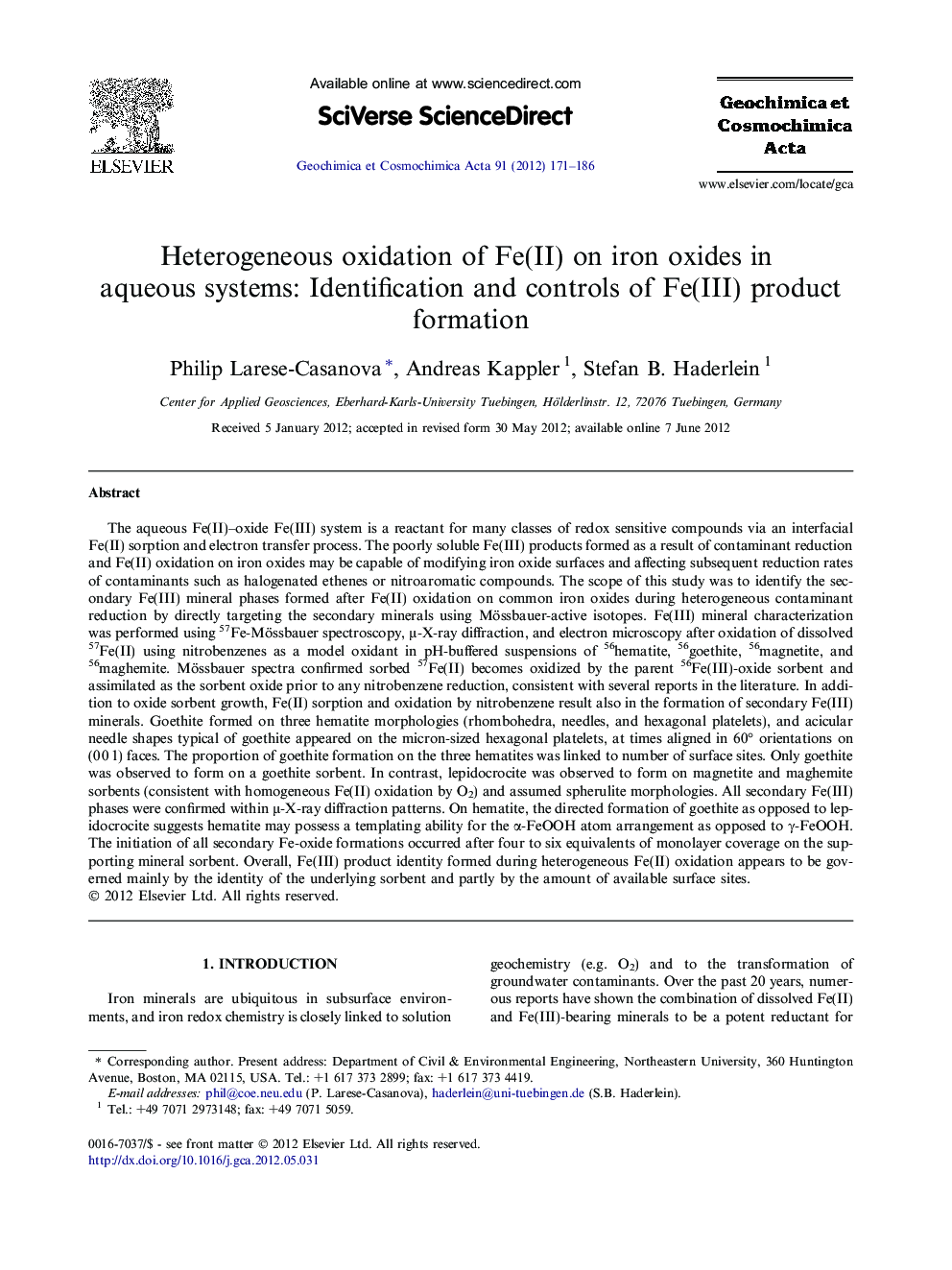| Article ID | Journal | Published Year | Pages | File Type |
|---|---|---|---|---|
| 4702705 | Geochimica et Cosmochimica Acta | 2012 | 16 Pages |
The aqueous Fe(II)–oxide Fe(III) system is a reactant for many classes of redox sensitive compounds via an interfacial Fe(II) sorption and electron transfer process. The poorly soluble Fe(III) products formed as a result of contaminant reduction and Fe(II) oxidation on iron oxides may be capable of modifying iron oxide surfaces and affecting subsequent reduction rates of contaminants such as halogenated ethenes or nitroaromatic compounds. The scope of this study was to identify the secondary Fe(III) mineral phases formed after Fe(II) oxidation on common iron oxides during heterogeneous contaminant reduction by directly targeting the secondary minerals using Mössbauer-active isotopes. Fe(III) mineral characterization was performed using 57Fe-Mössbauer spectroscopy, μ-X-ray diffraction, and electron microscopy after oxidation of dissolved 57Fe(II) using nitrobenzenes as a model oxidant in pH-buffered suspensions of 56hematite, 56goethite, 56magnetite, and 56maghemite. Mössbauer spectra confirmed sorbed 57Fe(II) becomes oxidized by the parent 56Fe(III)-oxide sorbent and assimilated as the sorbent oxide prior to any nitrobenzene reduction, consistent with several reports in the literature. In addition to oxide sorbent growth, Fe(II) sorption and oxidation by nitrobenzene result also in the formation of secondary Fe(III) minerals. Goethite formed on three hematite morphologies (rhombohedra, needles, and hexagonal platelets), and acicular needle shapes typical of goethite appeared on the micron-sized hexagonal platelets, at times aligned in 60° orientations on (0 0 1) faces. The proportion of goethite formation on the three hematites was linked to number of surface sites. Only goethite was observed to form on a goethite sorbent. In contrast, lepidocrocite was observed to form on magnetite and maghemite sorbents (consistent with homogeneous Fe(II) oxidation by O2) and assumed spherulite morphologies. All secondary Fe(III) phases were confirmed within μ-X-ray diffraction patterns. On hematite, the directed formation of goethite as opposed to lepidocrocite suggests hematite may possess a templating ability for the α-FeOOH atom arrangement as opposed to γ-FeOOH. The initiation of all secondary Fe-oxide formations occurred after four to six equivalents of monolayer coverage on the supporting mineral sorbent. Overall, Fe(III) product identity formed during heterogeneous Fe(II) oxidation appears to be governed mainly by the identity of the underlying sorbent and partly by the amount of available surface sites.
